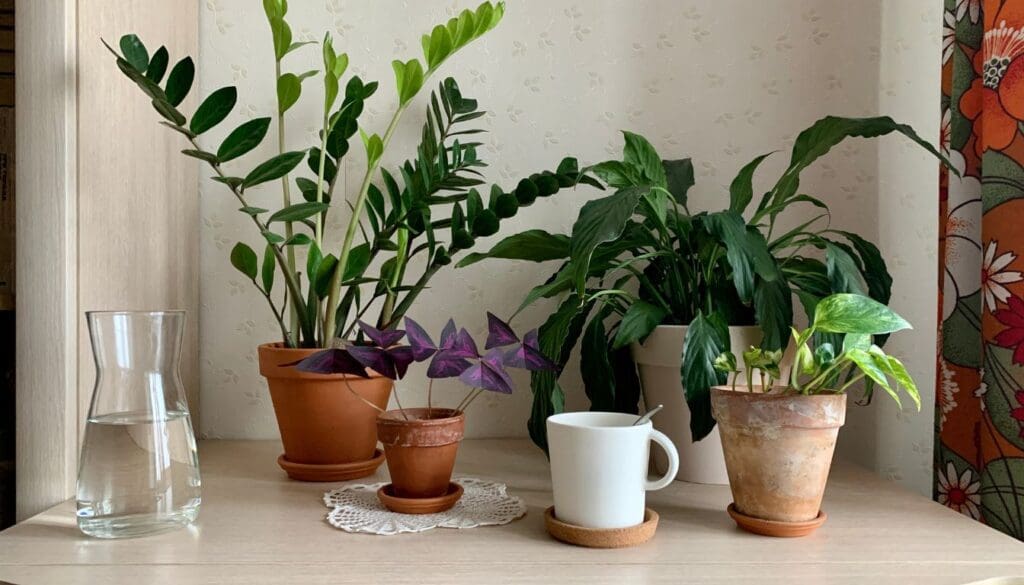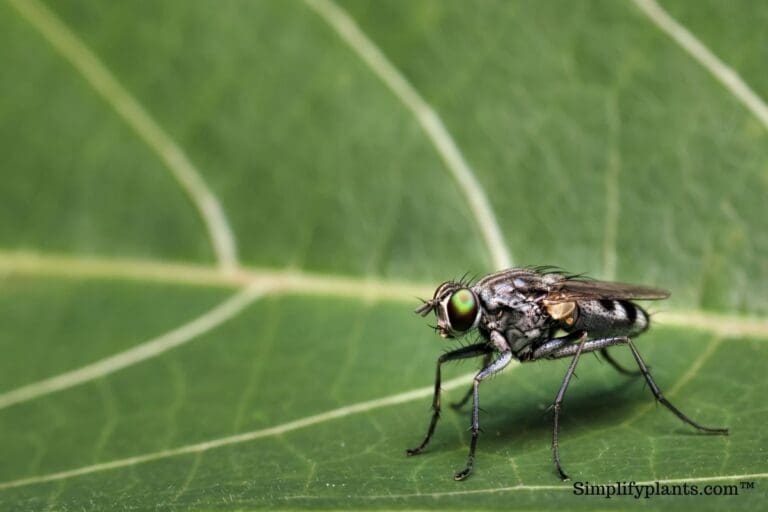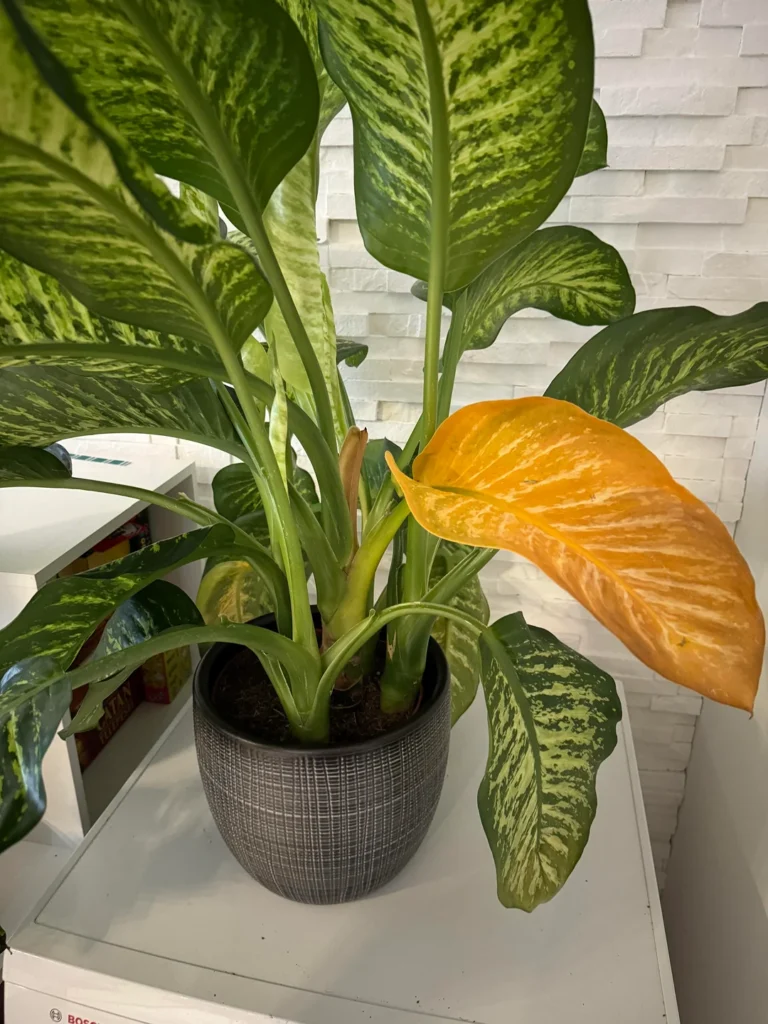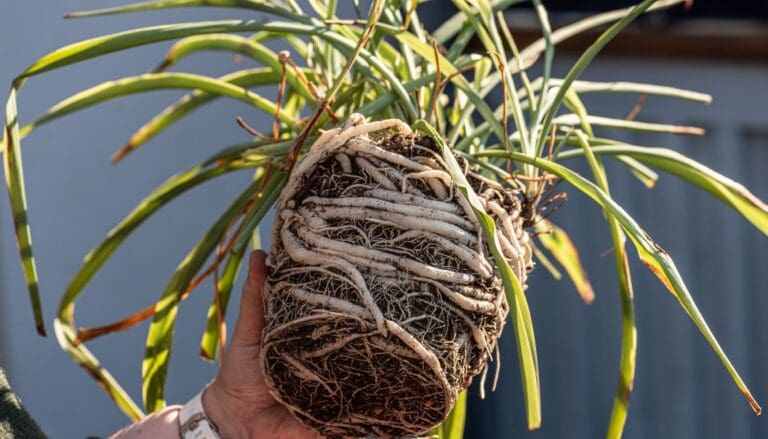Are Clay Pots Better Than Plastic Pots For Plants?
Certain plants don’t make much difference in what type of pot you plant them in. They mostly adjust themselves according to the “container” they’re growing. However, placing them in a pot that is more suitable for their necessities is best.
Which pot is more appropriate, a clay pot or a plastic pot? Clay and plastic pots have various qualities, depending on the plant you want to grow. In general, plants that thrive in moist soil are more suitable for plastic pots, whereas plants that mostly love to grow in arid soil do better in clay pots.
This article will illustrate the upsides and downsides of clay pots and plastic pots to help you to understand which pot is more suitable for your plants.

Please note: Simplify Plants is reader-supported. Some links in the post are affiliate links and I get a commission from purchases made through links in the post.
Clay pots vs. plastic pots
You can grow any plant you like in both clay or plastic pots.
But first, you must know what impact pot material can have on your plant.
Generally, the choice of pots mostly depends on individual taste.
For example, if you have only used clay pots in your lifetime, you may want to try plastic pots to get a new experience.
Once you understand the impact of pot material, it will be easier for you to choose pots according to your plant type.
Let’s briefly discuss how these pots are better for certain plants than others.
Clay pots
There are two types of clay pots, i.e., terracotta and unglazed clay pots.
They are usually made up of a particular type of soil and are used by a large number of people all around the world.
Most gardeners prefer to use clay pots over plastic pots as these pots provide a healthier environment for plants.
Clay pots are porous and provide proper airflow to the soil.
These pots don’t let the water get soggy and absorb excess moisture from the soil.
Clay pots are also thick and heavy, giving good plant roots protection.
These pots are mostly suitable for plants that thrive in arid soil.
Advantages of clay pots

Let’s look at the few advantages of using clay pots for your plants.
- Clay pots are porous: One of the main advantages is clay pots are porous. Clay pots don’t let the soil get wet as it soaks the excess moisture. The pots are mainly for those people who overwater their plants frequently.
- Protects from extreme temperatures: Clay pots are thick with heavy clay walls, which helps to protect the soil from heavy temperatures. If the temperature becomes too hot or cold, clay pots prevent the soil from cooling or heating too frequently, which can cause stress and harm a plant’s root system.
- Difficult to knock over: As clay pots are heavy, they are steadier, so they don’t knock over easily, unlike plastic pots. The weight of the clay pots gives them proper protection from being tipped over, especially from pets or children.
- Clay pots are made up of natural material: Clay pots are made up of different types of natural soil, which is not at all harmful to the environment, unlike plastic pots. It is healthy for both the plants and the environment.
- Gives an aesthetic look: Clay pots give a traditional look to the house. When time passes, clay pots acquire a warm patina, adding more charm to your house.
Disadvantages of clay pots
Although clay pots are my favorite, they also have a few disadvantages.
- Break easily: Clay pots break easily as compared to plastic pots. When the temperature drops, the pots begin to get crack due to freezing and breaks. Also, when you move your plant frequently, the chances of knocking it over are high. The sharp corners of clay pots are much more hazardous than plastic pots.
- Clay pots are heavy: Clay pots are heavier than plastic pots, which makes them difficult to move. This becomes much more difficult in the case of large clay pots and especially while rearranging them between outdoors and indoors when there is a change in season.
- More expensive: Clay pots appear to be more expensive than plastic pots.
- Accumulation of salt build-up: When the clay pot absorbs water from the soil, it also takes in some salt along with the water. This creates a salt build-up outside the container and leaves a powdery white substance. This can be a big deal for you if you like to use pots for decorative purposes.
- It is hard to add more drainage holes: If you purchase a clay pot with few or no drainage holes, it is impossible to add extra drainage holes. If you try, you might crack the entire pot.
- Watering more frequently: As clay pots absorb extra water in the soil, you need to water the plant more frequently, and if you don’t, the plant can suffer from underwatering issues.
Which plants are more suitable for clay pots?

As clay pots are porous, they help to dry out the soil faster.
Almost any type of plant can grow in clay pots, but these pots are mainly good for those that need less moisture to thrive.
Here I am naming some plants that are best for clay pots:
- Cacti
- Succulents
- Orchids
- Pilea
- Croton
- Ficus
- Aloe vera
- Peperomia
- Philodendron
- Dracaena
There are many other plants that you grow easily in clay pots.
Most gardener prefers to grow their plants in clay pots as they are natural and healthy.
Plastic pot

Plastic pots are the most widely used containers for indoor and outdoor gardening.
They are usually very light, flexible, and strong, and most gardeners are attracted to these pots for these reasons.
They are very inexpensive and come in different varieties according to sizes, shapes, and colors, and they are available in large numbers at retail shops.
Plastic pots are also easy to maintain as it does not break.
However, these pots are non-porous.
Plastic pots retain more moisture than clay pots and also don’t allow proper air circulation among the roots like clay pots do.
This creates a problem for the plants to breathe properly and invites various fungal problems, for example, root rot.
If you are one who forgets to water the plant frequently, then you can use plastic pots because they hold moisture for a long time.
A plastic pot is not the best choice as it can lead to overwatering issues.
Advantages of plastic pots
Although plastic pots are non-porous, which is not the best thing for plants, it still has a lot of pros.
- Keeps the soil moist: As plastic pots are non-porous, they keep the soil moist for a long-lasting period. It happens because the airflow in the soil is less, so it doesn’t let the soil dry out faster, unlike clay pots. It is the perfect choice for plants that love to grow in moist soil.
- Unlimited variety: Plastic pots come in an unlimited variety of colors, shapes, textures, and sizes, along with different decorating designs. You can choose any color and shape of plastic pot according to your home interior.
- Highly durable: Plastic pots are generally strong, flexible, durable, and hard to break. Clay pots can easily break in any circumstance, while plastic pots are unbreakable. Because of its durability, you don’t need to replace the pot frequently, and you can use it all season without any issues.
- Lightweight: Plastic pots are very suitable for you if you like to move your plant frequently to different places in your house because of changing seasons and light. Plastics are very lightweight, and you can easily replace even bigger pots in different locations.
- Low-priced: Generally, clay pots are expensive, and plastic pots are much cheaper. Plastic pots come at very reasonable prices, and using good quality plastic pots instead of clay pots can save a lot of money.
- Easily recyclable: High-quality plastic pots can be easily recyclable. Plastic pots greatly impact our environment, so giving plastic pots to the recycling clinic can be helpful to customers who need and can utilize them again without any issue.
- Easy to build extra drainage holes: If a plastic pot contains less number of drainage holes, you can easily add extra holes by drilling in the bottom of the pot.
- Easy to sanitize: If your plant has faced fungal diseases or infections, you can easily sanitize your plastic pot without changing the pot.
Disadvantages of plastic pots

If you don’t use plastic pots correctly, your plants can die.
- Plastic pots can be easily breakable over time: If these pots are introduced to extremely cold climates or UV exposure, they can break easily and become fragile.
- Frequent overwatering issues: Plastic pots are non-porous, allowing the plants to stay wet for longer. Because of soggy soil, plants can become more prone to overwatering issues that can cause extreme harm.
- Plastic pots can tip over easily: Plastic pots are very lightweight, so the chances of tipping over are quite high. Even though these pots are easily movable, they can tip over easily, even if they are filled with soil. This problem generally occurs in windy climates or through pets or children.
- Not environmentally friendly: Plastic pots are not at all eco-friendly and can cause extreme harm to the environment if not recycled properly. Plastic pots contain harmful chemicals that can pollute the soil, water, and the entire ecosystem. It is best to recycle them. Otherwise, it can create a lot of plastic waste.
Which plant is more suitable for plastic pots?

Plastic pots are mainly for those plants that love to stay in moist soil as the soil doesn’t dry quickly.
Plastic pots are non-porous, so it helps the soil to stay moist for a longer period.
Many moisture-loving plants can thrive in plastic pots.
Here I am listing out some of them:
- Peace lily
- Snake plant
- Pothos
- Spider plant
- Bromeliads
- Orchids
- Calatheas
- Sword fern
- Aglaonema
- Begonia
There are many more such plants that can easily grow in plastic pots.
So, if you think that growing plants in plastic pots are difficult, then you are wrong.
Which is better? Clay or plastic pots?
If you are confused about which pot to use for your plant, don’t worry because both pots can work fine.
Plastic and clay pots have many advantages and disadvantages.
Depending on the plant you want to grow, you can use either.
If your plant loves moisture, then plastic pots are more suitable than clay pots, but if it doesn’t like to stay in so much moisture, then you can use clay pots.
You must analyze your plant’s needs and determine which pot is better for them.
You must also consider the care you can provide to your plants.
A plant living in a clay pot might require more water than one in a plastic pot.
Do proper research and choose which pot will be more comfortable according to your plant’s needs.
Here is a table to help you decide:
| Clay pots | Plastic pots |
|---|---|
| It is porous and can wick away excess moisture from the soil. | It is non-porous, so it can cause overwatering if you’re not careful. |
| It is usually costlier than a plastic pot. | It comes at affordable prices. |
| It is on the heavier side and can break easily. | It usually doesn’t break easily. |
| Clay pots are environment-friendly. | These are not environment-friendly, but you can recycle them. |
| Clay pots don’t last as long as plastic pots. | Plastic pots last longer than clay pots. |
| These are not so easy to clean and can break if you don’t handle them right. | These are easier to clean and sanitize. |
| Clay pots keep the plants safe from extreme temperatures. | Plastic pots will not react well to extreme temperatures, which can hamper the plant. |
Final words
Each has their taste regarding the choice of pots for their plants. Depending on the people’s preference, both pots have many upsides and downsides.
Most people choose clay pots over plastic pots because of their material, but that doesn’t mean plastic pots are always toxic. Both pots can be better on their own; keeping the points in mind, you have to determine the effect it can cause on your plant.
After you are done with the research, it will be easier for you to choose between them.
Sources: Pot size matters, Society for Experimental Biology, The Effect Of Container Size, Effects of Plant Growth Retardants and Pot Sizes on Plants, Pot size matters.
Recommended Garden Supplies
| Product Image | Our Recommended Gardening Supplies | Check Offers! |
|---|---|---|
Top Top
Top
Top
Top
Top
Top
Top
Top | rePotme Houseplant and Tropical Classic Potting Soil Mix | Check Offer On Amazon |
 Top
Top
Top
Top
Top
Top
Top
Top | Espoma Organic Indoor Plant Food | Check Offer On Amazon |
 Top
Top
Top
Top
Top
Top
Top
Top | GooingTop LED Grow Light 6000K Full Spectrum Clip Plant Growing Lamp | Check Offer On Amazon |
 Top
Top
Top
Top
Top
Top
Top
Top | Soil Moisture Meter | Check Offer On Amazon |
 Top
Top
Top
Top
Top
Top
Top
Top | Govee Hygrometer Thermometer, Bluetooth Enabled! | Check Offer On Amazon |
 Top
Top | LEVOIT Humidifiers for Large Room(Best For Plants) | Check Offer On Amazon |
 Top
Top
Top
Top
Top
Top
Top
Top | Upgraded DIY Automatic Drip Irrigation Kit, 15 Potted Houseplants Support | Check Offer On Amazon |
 Top
Top
Top
Top
Top
Top
Top
Top | Stainless Steel Heavy Duty Gardening Tool Set | Check Offer On Amazon |
 Top
Top
Top
Top
Top
Top
Top
Top | Bonide Insecticidal Soap | Check Offer On Amazon |
 Top
Top
Top
Top
Top
Top
Top
Top | Bonide 32 oz Spray Neem Oil for Organic Gardening | Check Offer On Amazon |
 Top
Top
Top
Top
Top
Top
Top
Top | Garden Safe Fungicide | Check Offer On Amazon |






